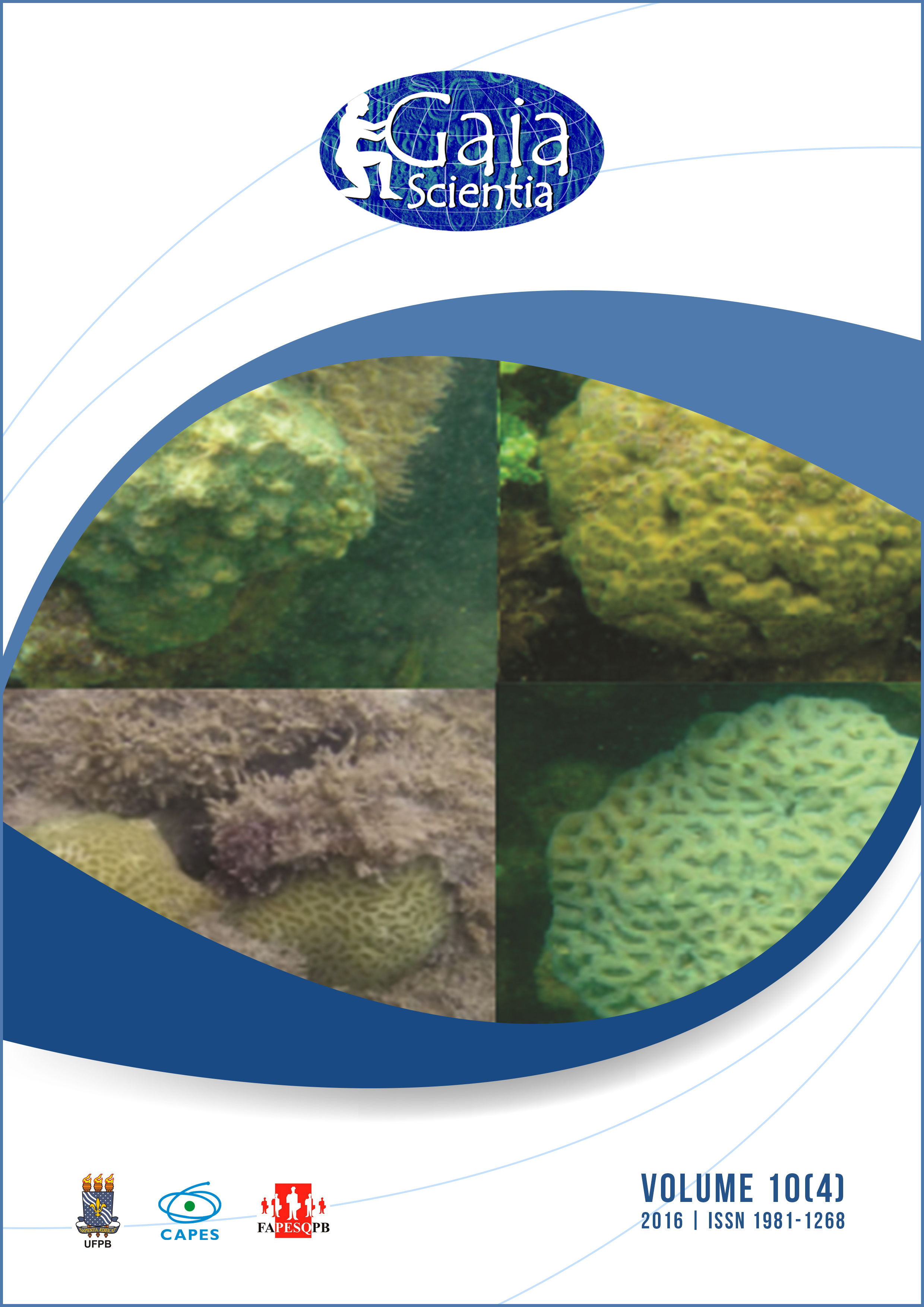Degradation of amino acids by leaching in feeds for shrimp
Resumo
The feed for shrimp are one of the most expensive in the aquaculture sector, mainly because this type of feed should have high stability in water. This study aimed to evaluate the stability of amino acids in commercial feeds with different protein contents intended for larval and juvenile shrimp subjected to leaching. The feed samples were exposed to the leaching process during the time period of 04, 08 and 12 hours. The analyses of degradation of amino acids were performed using an elution gradient in HPLC system. In all diets evaluated it was found that lysine and histidine are essential amino acids which suffered less degradation processes. It’s important to mention that arginine is considered an important amino acid for growth of shrimp. In both feeds with 35% protein (RA35 and RB35) the losses of arginine were 79 and 89% respectively. The results obtained in this study indicate that the leaching process significantly reduced the content of amino acids in the feeds. The physical structure of the feed doesn’t prevent the degradation process of amino acids in the leaching process.Downloads
Referências
ABCC. Associação Brasileira dos Criadores de Camarão. Programa de Biossegurança para Fazendas de Camarão Marinho.1. ed./Organizador. Recife, 2005. 68p.
Alam MS, Teshima S, Koshio S and Ishikawa M. Dietary arginine requirement of juvenile kuruma shrimp Marsupenaeus japonicus (Bate). Aquaculture Research, v.35, p.842–849, 2004.
Baskerville-Bridges and B, Kling LJ. Development and evaluation of microparticulate diets for early weaning of Atlantic cod Gadus morhua larvae. Aquaculture. Nutrition. n.6, p. 171–182, 2000.
Chamberlain GW. O ressurgimento da ração extrudada para camarões. Global Aquaculture Advocate,2004.
Cowey CB and Forster JRM. The essential amino acid requirements of the prawnPaleomon sermtus. The growth of prawns on diets containing proteins of different amino-acid compositions. Marine Biology, v.10, p.77–81, 1971.
Forster I and Ogata HY. Lysine requirement of juvenile Japanese flounder Paralichthys olivaceus and juvenile red sea bream Pagrus major. Aquaculture,v.161, p.131–142, 1998.
Fox JM, Lawrence AL and Li-Chan. E. Dietary requirement for lysine by juvenile Penaeus vannamei using intact and free amino acid sources. Aquaculture, v. 131, p. 279–290, 1995.
Harris LE. Diet stuffs. In: Pillay, T.V.R. (Ed.), Fish Diet Technology. UNDP/FAO, Rome, Italy, p. 111–168, 1980.
Hertrampf JW. Internal physical properties of shrimp feed. Aqua Culture Asia Pacific, n.3, p. 20–21, 2007.
Kanazawa A and Teshima, S. Essential amino acids of the prawn. Bulletin of theJapanese Society of Scientific Fisheries, n.47, p. 1375–1377, 1981.
Lim C. Effect of dietary pH on amino acid utilization by shrimp Penaeus vannamei. Aquaculture, v. 114, p.293–303, 1993.
Lopez-Alvarado J, Langdon, CJ, Teshima SI and Kanazawa. A. Effects of coating and encapsulation of crystalline amino acids on leaching in larval feeds. Aquaculture, v.122, p.335– 346, 1994.
Millamena OM, Bautista-Teruel MN Reyes OS and Kanazawa A. Requirements of juvenile marine shrimp, Penaeus monodon (Fabricius) for lysine and arginine. Aquaculture, v. 165, p. 95–104, 1998.
NRC (National Research Council). Nutrient Requirements of Fish and Shrimp. National Academy Press, Washington, DC, USA, p. 67-68, 2011.
Obaldo LG, Divakaran S and Tacon AG. Method for determining the physical stability of shrimp feeds in water.Aquaculture Research, n.33, v.5, p.369-377, 2002.
Palma J, Bureau DP, Correia M and Andrade JP. Effects of temperature, density and early weaning on the survival and growth of Atlantic ditch shrimp Palaemonetes varians larvae. Aquaculture Research, v.40, p. 1468–1473, 2009.
Onal U and Langdon C. Characterization of two microparticles types for delivery of food to altricial fish larvae. Aquaculture Nutrition, v.6, p. 159–170, 2000.
Richard L, Blanc PP, Rigolet V, Kaushik SJ and Geurden I. Maintenance and growth requirements for nitrogen, lysine and methionine and their utilisation efficiencies in juvenile black tiger shrimp, Penaeus monodon, using a factorial approach. The British Journal of Nutrition, v. 103, p. 984–995, 2010.
Shewbart KL, Mies WL and Ludwig PD. Identification and quantitative analysis of the amino acids present in protein of the brown shrimp Penaeus aztecus. Marine Biology, n.16, v.1, p. 64–67, 1972.
Small BC and Soares JH. Quantitative dietary lysine requirement of juvenile striped bass Morone saxatilis. Aquaculture Nutrition, v. 6, p.207–212, 2000.
Tacon AGJ. Global Review of Feeds and Feed Management Practices in Shrimp Aquaculture. Report prepared under the World Bank, NACA, WWF and FAO Consortium Program on Shrimp Farming and the Environment. Work in Progress for Public Discussion. Published by the Consortium, 2002. 68p.
Teshima S, Alam MS, Koshio S. Ishikawa M and Kanazawa A. Assessment of requirement values for essential amino acids in the prawn, Marsupenaeus japonicas (Bate). Aquaculture Research, v.33, p.395–402, 2002.
Wan J, Mai KS and Ai QH. The recent advance on arginine nutritional physiology in fish. Journal of Fishery Sciences, v. 13, p. 679–685, 2006.
Wilson RP. Amino acid and proteins. In: Halver, J.E., Hardy, R.W. (Eds.), Fish Nutrition, 3rd ed. Academic Press, London, p. 162–164, 2002.
Yufera M and Kolkovski S. Fernandez-Diaz, C.; Dabrowski, K. Free amino acid leaching from a protein-walled microencapsulated diet for fish larvae. Aquaculture 214, 273–287, 2002.










